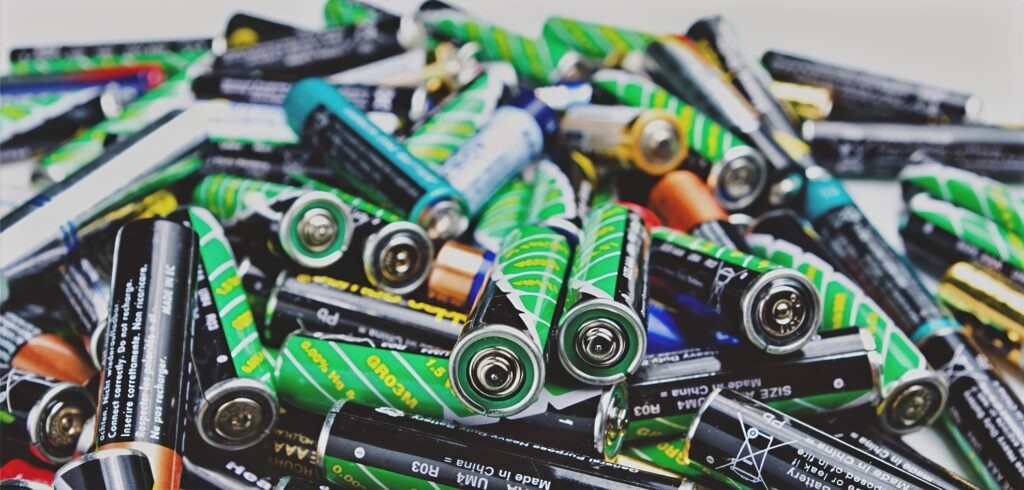B-cycle’s Call for Batteries Recycling Regulation
B-cycle’s Call for Batteries Recycling Regulation
Driving Battery Recycling Forward: B-cycle’s Call for Harmonised Regulation

Intro
Australia’s battery recycling landscape is at a pivotal crossroads. In a recent interim report, the Productivity Commission (PC) highlighted significant regulatory gaps that could stall the country’s progress in creating a robust, circular economy for batteries. These gaps are particularly acute for electric vehicle (EV) and embedded batteries in small electrical and electronic equipment (SEEE). In response, B-cycle, the flagship initiative of the Battery Stewardship Council (BSC), has commended the PC’s findings and urged an urgent shift toward nationally consistent, harmonised regulation.
B-cycle provides a comprehensive stewardship framework for battery recovery, championing a central message: without cohesive policy across all Australian states and territories, the nation risks losing valuable resources to landfill, missing out on job creation, and ceding its potential leadership position in sustainable battery management to other global actors. With advances in EV adoption and the ubiquity of battery-powered devices, the stakes have never been higher.
Why Batteries Are So Critical to the Circular Economy
Batteries are the energy backbone of modern society, powering everything from smartphones to laptops, e-bikes, and increasingly, electric vehicles. While they enable convenience and progress, they also pose significant challenges when it comes to end-of-life management. Many batteries contain valuable metals and materials such as lithium, cobalt, nickel, and manganese—resources that could be reclaimed for reuse or recycling. According to industry estimates, recovery and recycling of these components not only reduces the environmental footprint but also alleviates reliance on mining virgin materials.
Despite these benefits, inconsistent regulations across states have made it difficult to establish a cohesive battery stewardship ecosystem. This fragmentation is felt acutely in areas such as:
- Collection and Transportation: Varying rules on how batteries should be collected, packaged, and shipped for recycling.
- Processing Standards: Differences in licensing and operational guidelines for facilities that dismantle or process battery materials.
- Funding and Cost-Sharing Mechanisms: Diverse requirements for manufacturers and importers, making it unclear who pays for end-of-life battery management.
As a result, many batteries end up in general waste streams, risking landfill fires, lost opportunities for resource recovery, and additional health and environmental hazards.
Types of Batteries and the Need for Clear Standards
Batteries come in a wide variety of chemistries and form factors, including alkaline, lithium-ion, nickel-metal hydride, and lead-acid—each with its own unique disposal and recycling challenges. Some chemistries, such as lithium-ion, contain high-value materials like cobalt and nickel, which can be reclaimed through specialized recycling processes. Others, such as single-use alkaline batteries, are more common in household settings but can still pose hazards if disposed of incorrectly, including potential fire risks in landfills. Establishing consistent, national standards ensures these differing battery types are collected, transported, and processed in the safest, most cost-effective manner possible. When businesses and consumers know exactly how and where to recycle each chemistry, material recovery rates improve, pollution and fire risks diminish, and the overall system becomes more efficient and economically viable.
The Productivity Commission’s Interim Report
Titled “Australia’s Circular Economy: Unlocking the Opportunities,” the Productivity Commission’s interim report underscores how outdated or inconsistent regulations stifle investment and participation in battery recycling programs. Its key findings include:
- Regulatory Inconsistencies are preventing efficient recycling and reuse, particularly for EV and SEEE batteries.
- Harmonised National Frameworks are needed to unlock investment and industry involvement in battery recovery and reuse.
- Without Clear Policy Direction, Australia risks losing its opportunity to be a global leader in sustainable battery management.
In short, the Commission has concluded that a patchwork of rules is discouraging many manufacturers and recyclers from making the necessary capital investments to scale up collection, processing, and manufacturing facilities. Industry participants often prefer clear, uniform regulations that help them evaluate risk and return with greater certainty. A national battery stewardship scheme would play a major role in creating this environment.
B-cycle’s Perspective and the Role of the Battery Stewardship Council
B-cycle has long advocated for a united approach. Backed by the Battery Stewardship Council (BSC), B-cycle operates on the principle that all stakeholders—from importers and manufacturers to retailers and consumers—have a responsibility to ensure batteries are managed safely and efficiently throughout their lifecycle.
According to Libby Chaplin, Chief Executive Officer of B-cycle, the Productivity Commission’s report validates the organisation’s view that urgent and decisive action is needed. Chaplin warns that without regulatory alignment across the country, Australia risks significant economic and environmental consequences. Batteries could slip through the cracks, ending up in landfill, while manufacturers and importers who already invest in voluntary schemes might find themselves at a competitive disadvantage compared to those who do not participate.
Furthermore, Chaplin highlights that integrated, nationwide rules could open new doors for circular economy innovation. By instituting mandatory participation for all battery importers and producers, the scheme would close potential loopholes, encourage additional capital expenditures in recycling technology, and build consumer confidence.
New South Wales Leads the Way
In December 2024, the New South Wales Government announced a plan to introduce mandatory battery product stewardship legislation in 2025, becoming the first state to act decisively in this space. This move aligns with the Commission’s findings and could serve as a blueprint for other states and territories to follow. BSC commends this progress and calls for similarly aligned action in Victoria, Queensland, Western Australia, South Australia, Tasmania, the Northern Territory, and the ACT.
A national, harmonised framework ensures that no state inadvertently becomes a weak link in the chain. If all states adopt similar rules on collection, transport, processing standards, and cost responsibilities, the result would be a cohesive and predictable national market for battery recycling. Industry players could plan more confidently, secure in the knowledge that they are operating under the same requirements in every jurisdiction.
Path Forward: Embracing a Unified Battery Stewardship Model
The Battery Stewardship Council (through B-cycle) continues to press for a mandatory, nationwide policy that ensures everyone contributing to the battery lifecycle is equally invested in its end-of-life management. This shift could pave the way for:
- Scaled Infrastructure: More regional collection points, specialized transport networks, and advanced recycling plants.
- Greater Resource Recovery: Extraction of valuable metals and components that can be re-introduced into the production cycle.
- Reduced Environmental and Safety Risks: Fewer batteries ending up in landfills, decreasing fire hazards and leachate issues.
- New Green Jobs and Industries: Accelerated growth in specialized recycling and resource recovery sectors, fueling economic development and innovation.
Overall, the Productivity Commission’s interim report signals a significant tipping point for Australian battery stewardship. The time for slow, incremental change has passed; the scale and complexity of battery usage—spanning everything from household gadgets to electric cars—demands a swift, unified response.
By taking immediate action and following the example set by New South Wales, Australia can cement its position not just as a regional but as a global leader in battery recycling innovation. With the right policies in place, this challenge becomes an opportunity—one that promises substantial economic, social, and environmental benefits for future generations.


